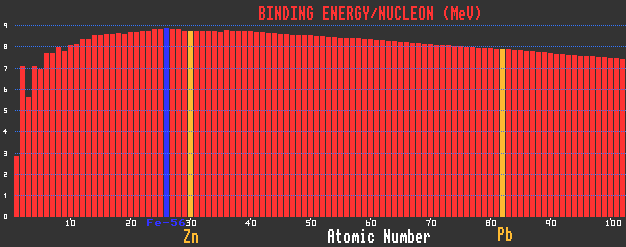

Fusion between elements heavier than iron, the element with the highest binding energy, is still possible, but not energetically favourable, that is, the fusion will consume energy rather than release energy if the product isotope is heavier than the sum of the two lighter isotopes used in its' making. Indeed, this is how super heavy elements beyond fermium are made in the laboratory.
It helps if the atoms you start off with are fairly stable to start with, that is, have high binding energies per nucleon. Shown are lead- (Pb-208) and zinc (Zn-70) which were succesfully fused to produce an atom of element 112. See 'Superheavy Nuclei' (Transfermium production).
![]()